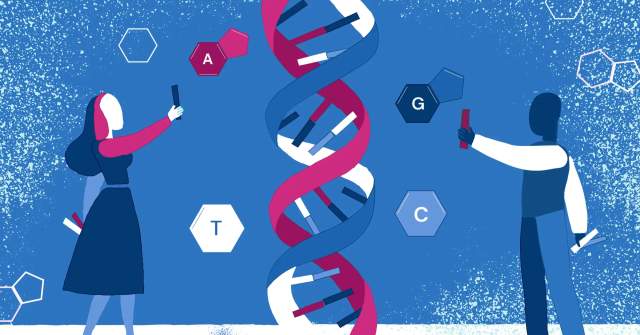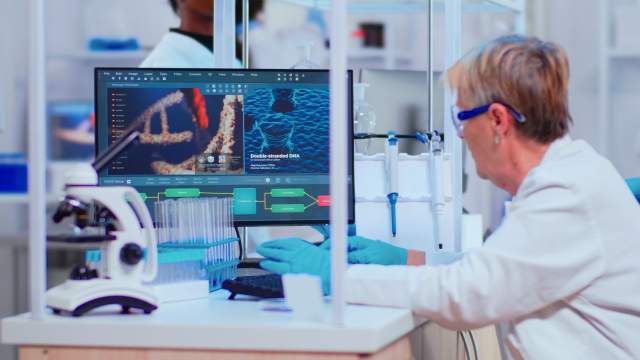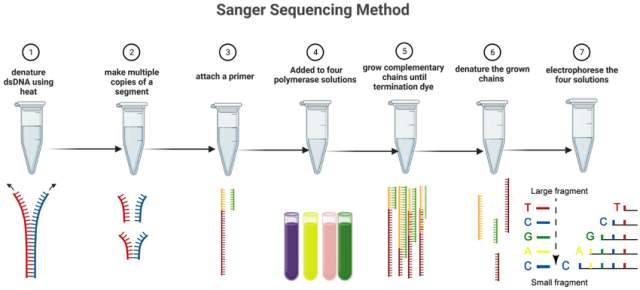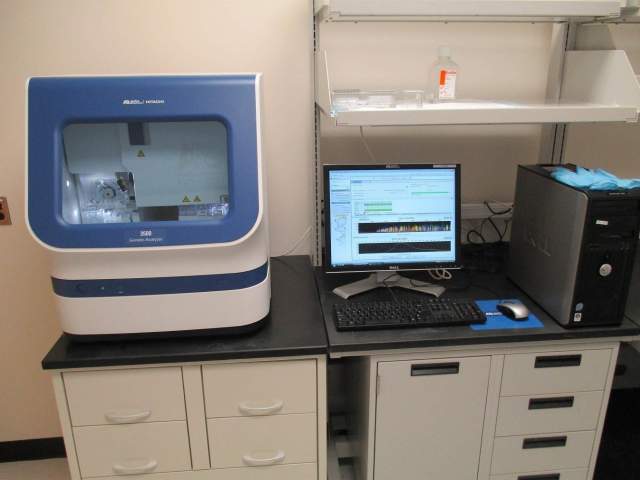Introduction to the Human Genome Project (HGP)
Ever stop and think about what makes you, well, you? For ages, people have been fascinated by life’s little mysteries, and a huge part of that story is hidden in our DNA. The Human Genome Project (HGP) was this bold, worldwide scientific adventure that set out to uncover exactly that. It officially kicked off back in 1990, with one massive goal: figure out the full sequence of all the chemical base pairs that make up human DNA, and then find and map every single gene in the human genome. Basically, it was like creating the world’s first super-detailed “blueprint” of a human being! This wasn’t just another science experiment, it was a journey right into the heart of what makes us tick, promising to totally change medicine and how we see ourselves. So, are you ready to dive in and see how this incredible project played out and why it still matters today?

What Was the Human Genome Project and Why Did It Matter So Much?
So, what exactly was the Human Genome Project, and why did everyone make such a big deal about it? At its core, the HGP wanted to “read” our entire genetic code, the complete set of instructions for building and running a human body. Imagine having the ultimate instruction manual for yourself! This manual is written in DNA language: about 3 billion base pairs long. Finally cracking this code was a game-changer. For the first time ever, we could look at our genetic makeup as a whole picture. That meant understanding how we develop, why some people get certain diseases while others don’t, even clues about where we came from evolution-wise. And honestly? The data wasn’t just numbers on a page, it completely changed how scientists ask questions and dream up new treatments.
The Human Genome Project Timeline: Big Moments
The HGP wasn’t something that happened overnight. Nope, it was more of a marathon than a sprint, filled with teamwork and huge breakthroughs along the way. Here’s a quick look at how things went:
- 1980s: The idea starts brewing among top scientists.
- 1990: Official launch! A 15-year global effort led mostly by the U.S. Department of Energy and National Institutes of Health.
- 1999: They publish the complete sequence for Chromosome 22, proof they could actually pull this off.
- 2000: The “working draft” comes out, a pretty big media moment since it covered around 90% of the genome.
- 2003: Mission accomplished! Two years early AND under budget. The final reference sequence covered about 99% of gene-containing regions with crazy high accuracy (think 99.99%).
- After 2003: Scientists kept working to fill any remaining gaps, especially in tricky parts of our DNA.

Every milestone here didn’t just mean progress, it showed what can happen when countries come together for something truly big.
How Did the HGP Change Genetic Research?
Honestly? The HGP flipped genetic research on its head. Before this project, scientists were stuck studying one gene at a time, a slow process if there ever was one. With HGP done, suddenly researchers could look at thousands of genes all at once! This shift pushed them to invent new tools and techniques (especially for sequencing lots of DNA fast) and also kicked off whole new fields like computational biology. Plus, one super important thing: all this data was made public. Anyone could use it, speeding up discoveries everywhere. In short: after HGP, mapping genes got faster, easier, and way more interesting.

How Did They Actually Sequence All That DNA?
I know sequencing an entire human genome sounds wild! But let’s break down how they did it:
- DNA Extraction: First step? Get DNA from samples (usually blood or cells).
- Fragmentation: Chop those long DNA strands into smaller chunks.
- Cloning: Copy each chunk many times (often inside bacteria) so there’s enough material.
- Sequencing Reaction: Use Sanger sequencing, this method creates DNA pieces that end at different points (each tagged with A, T, C or G).
- Electrophoresis & Detection: Separate these pieces by size using gel electrophoresis; lasers “read” which letter is at each end.
- Assembly: Supercomputers stitch millions of these snippets together like putting together an insanely complicated jigsaw puzzle.

It was revolutionary back then but also super expensive and time-consuming which is why newer methods eventually took over.
Cool Discoveries from the Human Genome Project
- Fewer Genes Than We Thought: People guessed humans had maybe 80–100k genes but nope! Turns out it’s more like 20–25k.
- “Junk DNA” Isn’t Junk After All: Loads of our DNA doesn’t make proteins and used to be called “junk.” Now we know much of it has important jobs in regulating genes.
- We’re Almost Identical… But Not Quite: Any two humans share about 99.9% identical DNA, the tiny .1% difference gives us all our unique traits.
- Disease Clues Galore: With this reference map in hand, scientists can spot genes linked to thousands of inherited diseases.
These insights totally changed what we thought we knew about ourselves.
Personalized Medicine: Healthcare Gets Personal
Probably one of the most exciting outcomes? Personalized medicine! Thanks to HGP findings, doctors can now tailor treatments based on your unique genetic info, a total game-changer for healthcare.
For example: Pharmacogenomics looks at how your genes affect your response to certain meds so doctors can pick drugs (and doses) that’ll work best for you while avoiding nasty side effects. Plus, knowing your genetic risks means earlier screenings or preventative steps before problems start.
Imagine going to your doctor someday soon and having care designed specifically for you!

Disease Prevention Just Got Smarter
With all this new genetic info from HGP:
- People with risky gene variants can get screened more often or earlier (like women with BRCA mutations getting extra mammograms).
- Knowing your risks means making smarter choices maybe tweaking your diet or exercise routine if you’re prone to heart disease.
- Researchers can dig deeper into why diseases happen and come up with better ways to prevent them.
Tackling Genetic Disorders
Before HGP? Finding which gene caused an inherited disorder took forever! Now, with a full “parts list”, it’s so much faster:
- Diagnostics are quicker and more accurate even before symptoms show up sometimes!
- Families can get better advice about inheritance risks through genetic counseling.
- Knowing what causes a disorder helps scientists design targeted treatments including potential gene therapies for conditions once thought untreatable.
Cancer Research Reimagined
Cancer is basically disease caused by messed-up genomes, mutations gone wrong so naturally HGP made a huge impact here:
- Scientists can now pinpoint which mutated genes drive cancers (and which help keep things under control).
- Targeted therapies exist because researchers know exactly what to attack, for example Herceptin treats breast cancer tied to specific mutations.
- Tumor profiling helps doctors choose treatments based on your tumor’s exact genetics, not just guessing anymore!

Projects like The Cancer Genome Atlas wouldn’t have been possible without everything learned from HGP.
Gene Therapy Gets Its Map
Gene therapy aims to fix faulty genes but first you need to know exactly where those genes are and what their sequences look like! That’s where HGP came in:
- It helped researchers identify which genes matter for specific conditions
- It gave them crucial details about gene function
- It paved the way for developing safer delivery methods
In short: Without HGP’s detailed map, modern gene therapy would be stuck in neutral.
Biotech Boom: Tech From HGP
To tackle such a big challenge as sequencing billions of bases quickly (and affordably!), scientists had to invent new stuff:
- Next-generation sequencing technologies emerged making sequencing way faster and cheaper
- Bioinformatics became essential; managing all that data needed powerful algorithms
- Tons of biotech companies sprang up focused on genomics-based diagnostics and drug discovery
HGP didn’t just spark innovation, it launched entire industries!
Tools That Made It All Possible
Here’s some tech talk but I’ll keep it simple:
- Sanger Sequencing was their main method for reading DNA letters
- PCR amplified small bits of DNA so there was enough material
- Special cloning vectors (BACs & YACs) helped copy large stretches
- Automated sequencers sped things up compared to doing everything by hand
- Early bioinformatics tools managed mountains of new data

All these tools laid groundwork for future breakthroughs in molecular biology.
Ethics & Controversies: Not Just Science Stuff
Right from day one everyone realized decoding our blueprint raised tricky ethical questions:
- Who should be allowed access to your genetic info?
- Could employers or insurers discriminate against people based on their DNA?
- How might knowing your risks mess with your mental health?
- Would everyone benefit equally or would some folks get left behind?
The project set aside real money for tackling these issues head-on, a move that set standards for responsible innovation everywhere else in genomics.
What Comes Next After HGP?
Finishing HGP wasn’t really “the end” more like opening up brand-new frontiers:
- Now we’re figuring out not just where genes are but what they do (“functional genomics”)
- Comparing genomes across species tells us cool things about evolution (“comparative genomics”)
- New projects want reference genomes that represent all kinds of people (“pangenomics”)
- We’re studying chemical changes above-and-beyond DNA sequence (“epigenomics”)
- Personalized medicine keeps getting better every year

And honestly, we’re probably just scratching the surface here!
Wrapping Up: Why Does the HGP Still Matter?
When you zoom out, the Human Genome Project stands as one of humanity’s greatest scientific feats ever achieved. More than just decoding letters on a page, it opened windows into who we are biologically speaking and changed medicine forever. Its legacy isn’t only in what it discovered but also in how it keeps inspiring new questions and driving groundbreaking innovation today.
As we continue exploring life’s codebook thanks to foundations laid by HGP, you gotta wonder: What incredible discovery will come next?
